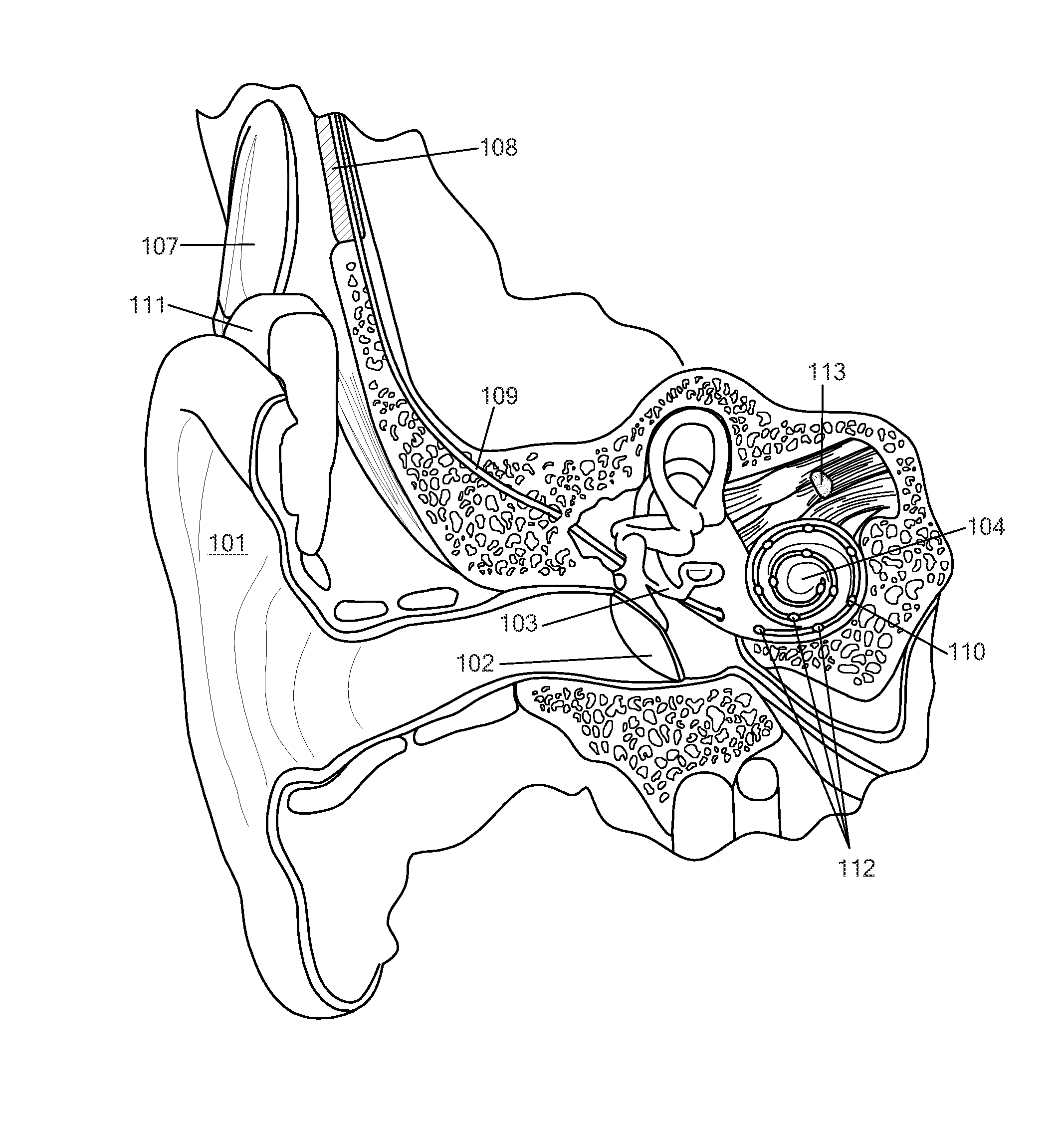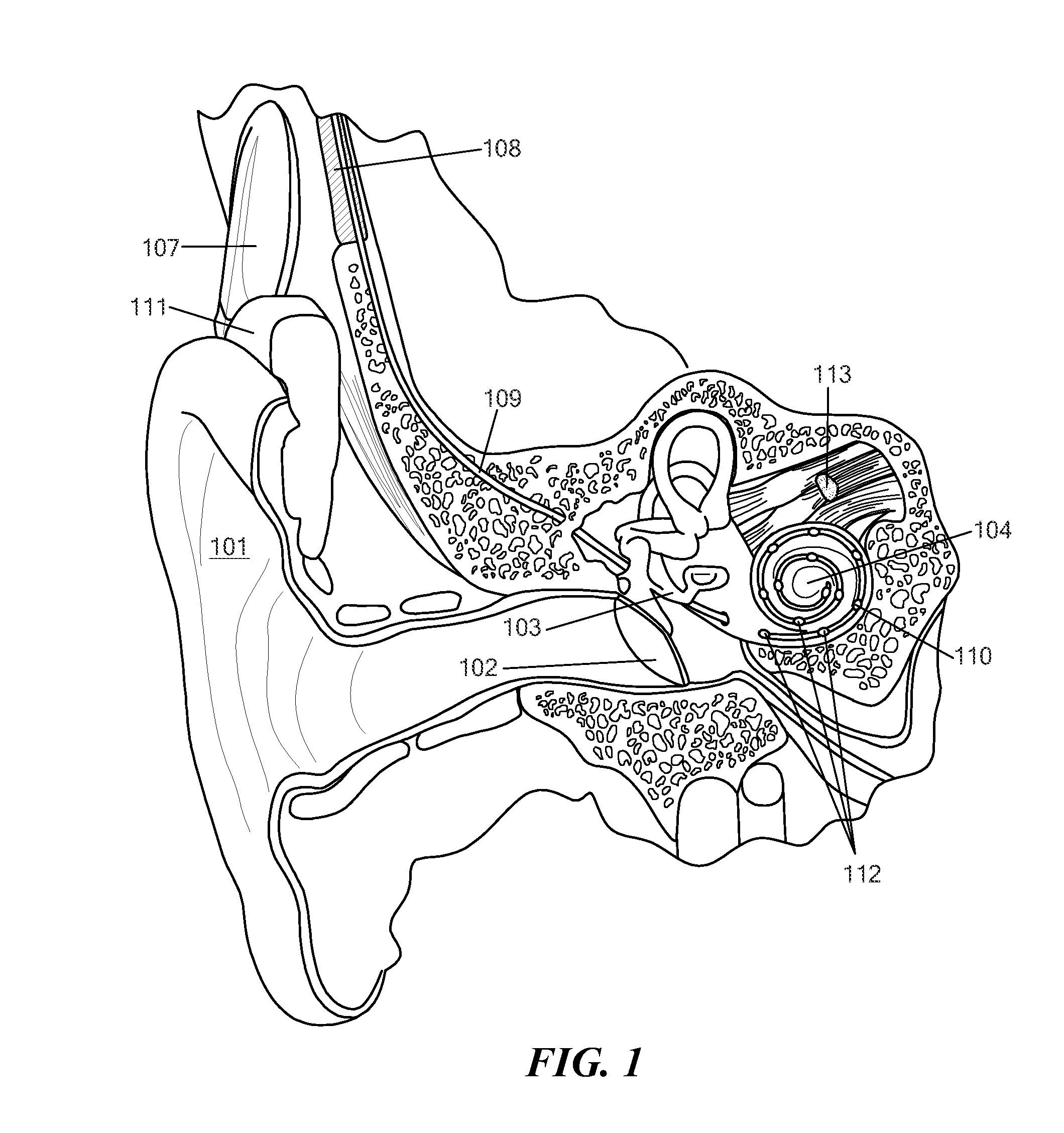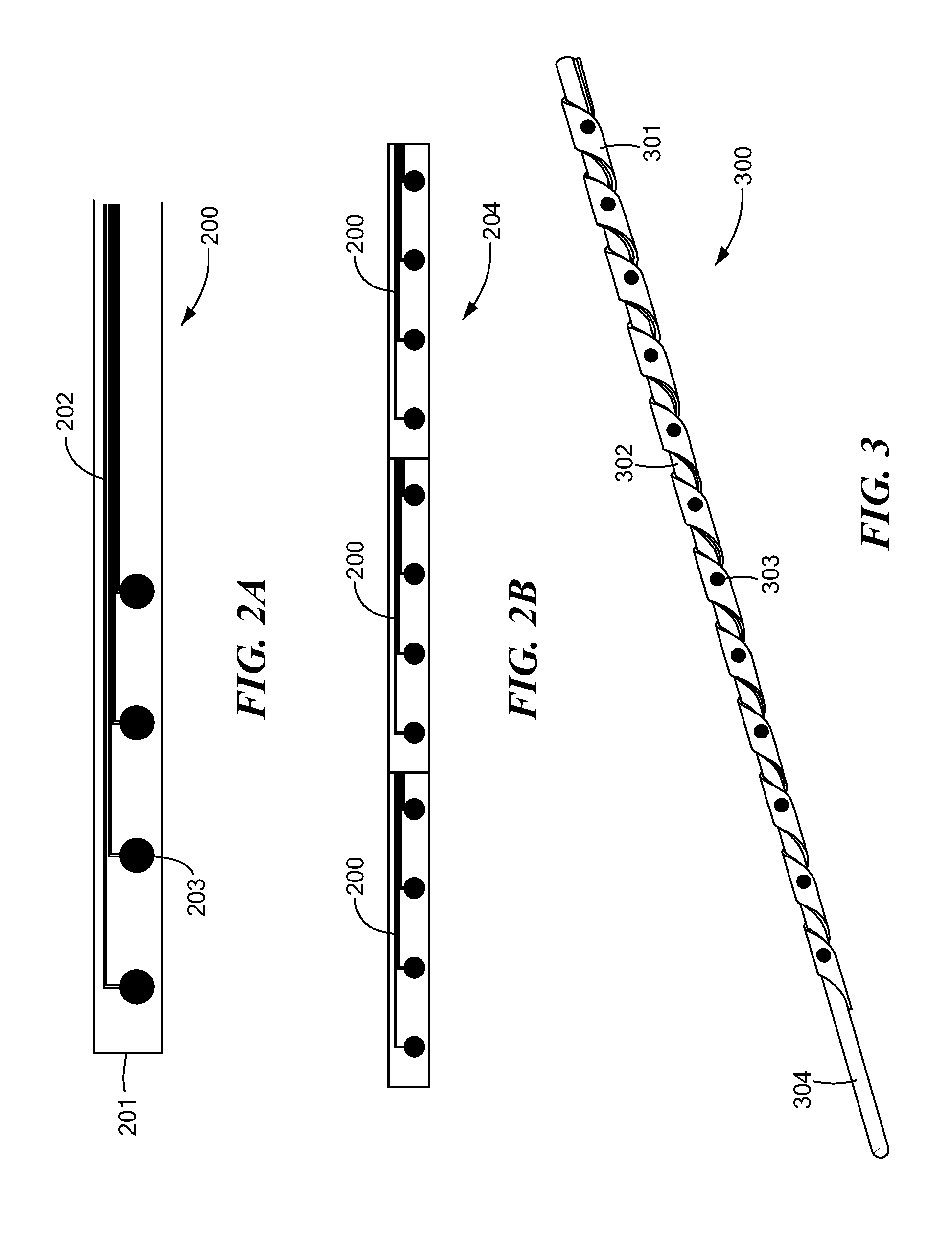Ear Implant Electrode and Method of Manufacture
a technology of implant electrodes and electrodes, applied in the field of implant electrode arrays, can solve the problems of poor welding of contacts, large amount of hand assembly of present-day ci electrode arrays, and need of electrode insertion tools, and achieve the effect of controlling bending flexibility and bending flexibility
- Summary
- Abstract
- Description
- Claims
- Application Information
AI Technical Summary
Benefits of technology
Problems solved by technology
Method used
Image
Examples
Embodiment Construction
[0045]Embodiments of the present invention are directed to an ear implant electrode array. Bend control elements are distributed along the length of the electrode array to control bending flexibility of the electrode array as a function of a bend radius threshold. For a bending radius below the threshold which an electrode array normally can reach within the cochlea due to cochlear anatomy, the flexibility of the electrode array is maximum (i.e. minimum spring-back force when bent), But for a bending radius below the threshold, (less than the smallest radius of the outer wall inside the scala tympani), the electrode array has an increased spring-back force. The highly flexible behavior for bending radiuses above the threshold allows electrode array insertion with reduced insertion forces and insertion trauma on the lateral wall of the cochlea. The increased spring-back behavior for bending radiuses below the threshold allows electrode array insertion without kinking or buckling.
[004...
PUM
 Login to View More
Login to View More Abstract
Description
Claims
Application Information
 Login to View More
Login to View More - R&D
- Intellectual Property
- Life Sciences
- Materials
- Tech Scout
- Unparalleled Data Quality
- Higher Quality Content
- 60% Fewer Hallucinations
Browse by: Latest US Patents, China's latest patents, Technical Efficacy Thesaurus, Application Domain, Technology Topic, Popular Technical Reports.
© 2025 PatSnap. All rights reserved.Legal|Privacy policy|Modern Slavery Act Transparency Statement|Sitemap|About US| Contact US: help@patsnap.com



